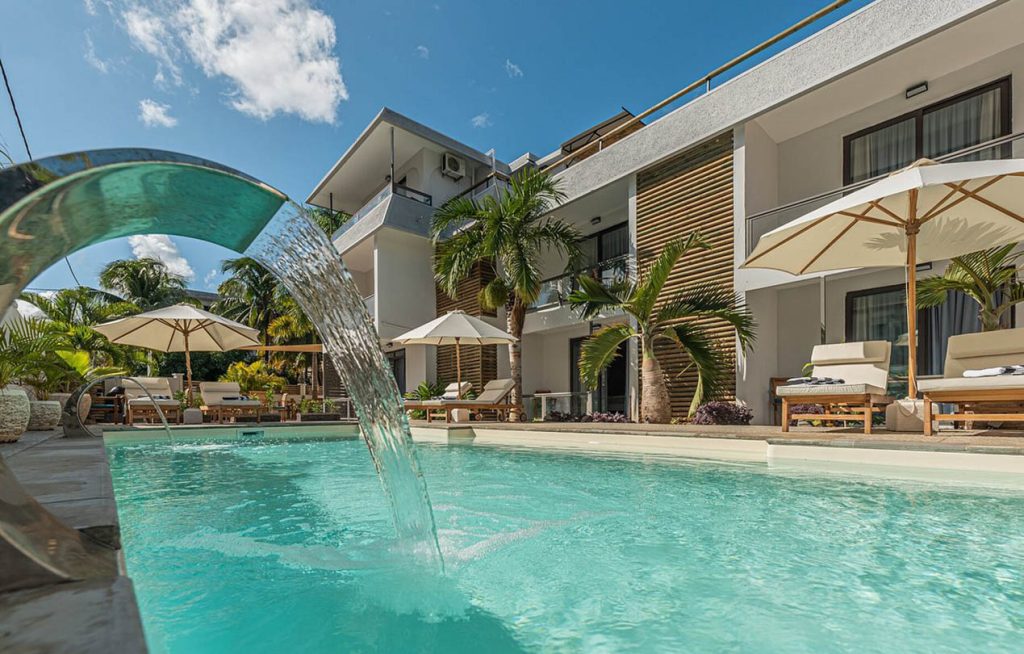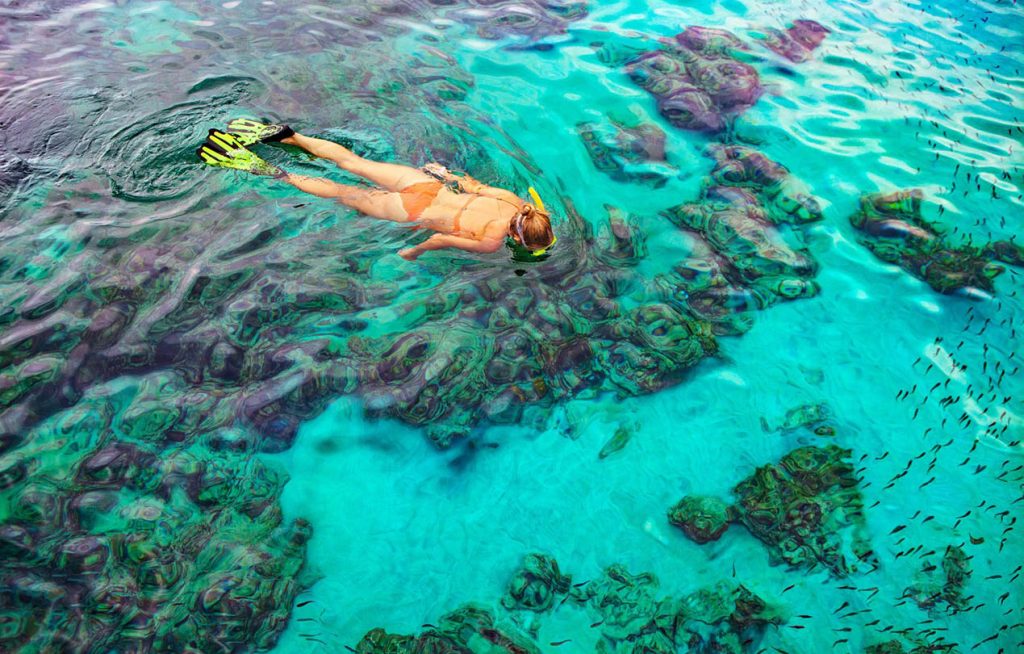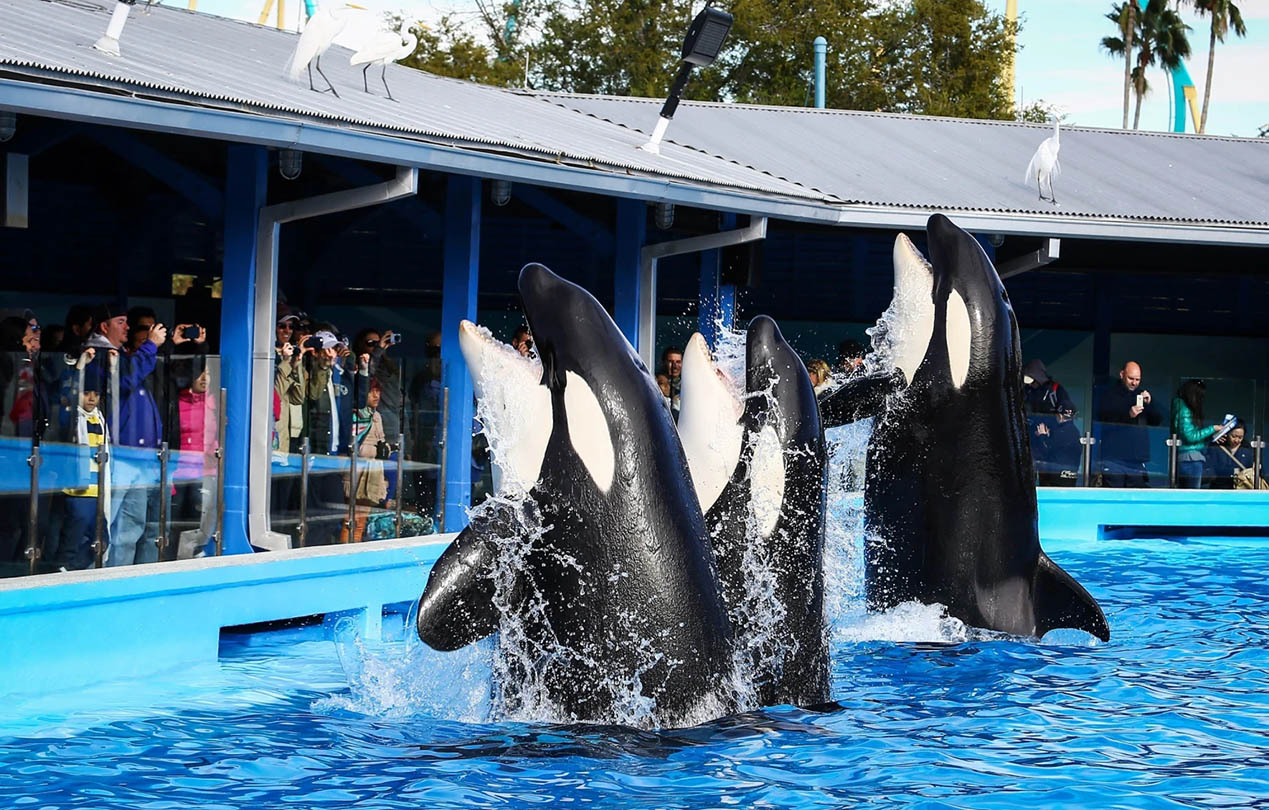Why Choose These Destinations?
We chose Mauritius for its turquoise beaches and excellent hotel services, making it the perfect honeymoon destination in our eyes. However, we aren’t the type to settle for cocktails on a white sandy beach alone. We knew we’d quickly get bored, so we took advantage of our proximity to Réunion Island, spending half of our trip there. Réunion is a paradise for hikers and offers extraordinary landscapes. It’s part of the French overseas territories (DOM-TOM), and we were eager to explore its Creole culture.
It promised to be an exciting journey, blending relaxation with exploration – everything we love!
When to Go?
From May to November, it’s the dry season, also known as the austral winter. Rainfall is minimal, and the weather is pleasant. From December to April, it’s the austral summer, or rainy season. Temperatures are very high, with a risk of cyclones, especially from January to March. Additionally, the climate varies by region on both islands, some areas being more humid than others.
We believe you can visit these destinations at any time of the year, provided you avoid the cyclone season (January to March). We experienced some rain during our stay, but it didn’t hinder our enjoyment. Sometimes, luck plays a part!
How to Get There?
Our travel agency handled the flights. We flew with Air Austral from Paris, taking an overnight flight that landed in the morning at Roland Garros Airport in Saint-Denis.
From there, we took a short flight to Mauritius, landing at Sir Seewoosagur Ramgoolam International Airport.
Where to Stay?
The travel agency offered us a wide range of hotels to suit all tastes and budgets.
In Réunion, we stayed 3 nights at Lux Saint-Gilles in Saint-Gilles les Bains and 3 nights at Diana Dea Lodge in Sainte-Anne. We opted for half-board as we were often out exploring and enjoyed substantial breakfasts. For lunch, we often had just fruits bought on the roadside.
In Mauritius, we stayed at Ambre Resort & Spa on an all-inclusive basis. Looking back, half-board would have sufficed since we spent much of our days outside.
Outside of a honeymoon context, we might have chosen more budget-friendly options like guesthouses or Airbnbs.
Getting Around?
For Réunion, the travel agency recommended renting a car, which we found essential. There’s so much to see that it would be a shame to stay confined to the hotel. The roads are easy to navigate, signage is in French, and the mobile network allows you to use your phone’s GPS for free, as it’s part of France. It couldn’t be simpler.
Mauritius is different. We were advised against renting a car. While possible, we didn’t regret opting for local taxis. Driving is on the left, and the roads can be challenging with fast drivers, cyclists, and stray dogs. Moreover, road signs are sparse. Our Mauritian taxi driver explained that this deters tourists from driving themselves, opting for taxis like we did. After 6 days of exploring Réunion, it was a relief to sit back in a taxi and let someone else navigate. We enjoyed insightful conversations with our driver, learning a lot about local life. Avoid hotel taxis; social media is a better option for finding a taxi at a more reasonable price, allowing you to negotiate and plan routes in advance.
What We Visited
We spent a total of 12 days on our trip, dividing our time equally between the two islands, which felt quite short!
Réunion Island
In Réunion, we made the most of our three days around Saint-Gilles Les Bains. We enjoyed the lagoon, hiked near waterfalls, visited Piton Maïdo, took the winding road with 400 turns to explore Cilaos and its surroundings. We also visited Kélonia, a center for caring for marine turtles, and even took a helicopter tour to get an aerial view of the entire island. Continuing along the wild southern coast, we explored the humid east, taking the volcano route to hike around Piton de la Fournaise. We explored Salazie Cirque, the village of Hell-Bourg, the Tamil temples in Saint-André, and the lava road leading to Sainte-Rose.
With a few more days, we would have loved to hike in Mafate Cirque and reach the Piton de la Fournaise crater. Despite this, we still managed to get a great overview of Réunion.
Mauritius
Mauritius is perfect for relaxation and snorkeling but offers much more. We headed to the southwest to encounter dolphins in Tamarin Bay. We then climbed Le Morne Brabant to enjoy the view of Benitiers Island. We visited Casela, a wildlife park where we interacted with lions and tigers, and Chamarel, home to the Seven Colored Earth, a waterfall, and one of the island’s renowned rum distilleries. We also explored the north, visiting Pamplemousses Botanical Garden, Cap Malheureux with its small church, Château Labourdonnais, the capital Port Louis with its typical market. Near our hotel, we took an excursion to Île aux Cerfs.
Given more time, we would have liked to visit Sacred Lake (though it was foggy when we passed by), experience the Tea Route at Bois Chéri, and explore the Blue Bay beach in the south. Other sea excursions worth considering include Îlot Gabriel and Île aux Deux Cocos.
Casela Park and Chamarel
On our first day on the island, we took advantage of the overcast weather to explore inland attractions.
Casela World of Adventures
Our first stop was Casela Park near Flic-en-Flac, spanning 250 hectares and home to a variety of animals including birds, lions, cheetahs, zebras, giant tortoises, monkeys, and tigers. The park itself is delightful to explore.
Additional activities, beyond the entrance fee, are available. You could easily spend a day here, especially with children. We opted for the lion interaction, a highlight of Casela. It was quite impressive to enter the enclosure and get close enough to pet the lions, who were surprisingly playful among themselves! We felt safe with experienced guides accompanying us.
After this thrilling experience, we decided to embark on a safari in the large tiger enclosure.
We boarded a caged truck that took us up close to these animals, some sleeping on trees while others roamed around the truck in search of food.
We could have spent a few more hours enjoying the park, which also offers activities such as quad biking and zip-lining among the animals. However, time was limited, so we headed towards Chamarel for our next visits.

Chamarel Waterfall
En route, we enjoyed beautiful views of Le Morne Brabant and Benitiers Island. We spotted a monkey perched in a tree, leisurely peeling an orange. Finally, we arrived at the foot of the famous Chamarel waterfall, surrounded by lush vegetation. The place is marvelous and feels very wild, like something out of a Tarzan movie!
Seven Colored Earth
We continued our visit to Chamarel with the renowned Seven Colored Earth. This rare geological curiosity features bare earth dunes with distinct colors (brown, ochre, pink, orange, purple…). These are volcanic ashes that separate into different colors within hours of mixing. We walked around the enclosure, accompanied by a few turtles enjoying their meal.
Chamarel Rum Distillery
To conclude this eventful day, we visited the Chamarel Rum Distillery, one of the island’s most famous. Here, we observed locals at work and learned about the different stages of rum production.
Before leaving, we had the opportunity to taste various rums produced by the distillery. There’s something to suit every taste and budget! Although I’m not a fan of alcohol, the place was very charming.
Dolphin Encounter & Le Morne Hike
After a short night’s sleep, we left our hotel around 4 AM to head to the southeast of the island. It was still dark, and we dozed off in the taxi.
Why so early? We had booked an excursion to see dolphins off the coast of Tamarin Bay and wanted to arrive before the tourist crowds.
Dolphin Encounter
We arrive at Tamarin at sunrise, greeted by soft colors as we board a small motorboat. Here we go!
The fatigue quickly fades as we spot the first dolphins. We gear up with fins, masks, and snorkels to swim alongside them. It requires quick reflexes to catch glimpses of them underwater. We had several opportunities to see them up close. It was magical being just inches away, careful not to disturb them since they are wild dolphins living in the open sea. They were so close that we could even hear their typical whistles underwater.
Île aux Bénitiers Lagoon
Swimming to find dolphins is quite tiring, so after that, we go snorkeling in the lagoon. We spot a variety of fish and even a stingray.
The sun is now shining brightly, revealing the turquoise blue shades we anticipated when choosing this destination. We approach Le Morne Brabant and the famous Crystal Rock in the lagoon of Île aux Bénitiers. We spot a few local fishermen.
Le Morne Brabant, a UNESCO World Heritage site, rises 550 meters above sea level. Crystal Rock, a small volcanic rock seemingly floating in the middle of the sea, adds to the picturesque scene. This excursion was one of our favorites on Mauritius.
Climbing Le Morne Brabant
In the afternoon, after admiring Le Morne Brabant from the sea, we decide to climb it. The heat and the long ascent do not deter us, knowing the panoramic view will be worth the effort.
At the summit, we marvel at the landscape, with a myriad of blue shades that are invisible from below. The descent is quicker and less physically demanding, which suits us given the heat. We encountered few tourists on the trail, but for us, this hike is a must-do in Mauritius.
The North of the Island
Visit to Kaylasson Temple
On the way to Port Louis, our taxi stops at a magnificent Tamil temple, Kaylasson Temple. We had seen a few in Réunion, but this one is incredibly well-maintained, with what seems like very recent paintings. It’s a vibrant and colorful place!
Port Louis, the Capital
Our local taxi then takes us to Port Louis, the capital. Along the way, we pass by buses that seem to be from another era. In Port Louis, we encounter many locals. We first stroll along Caudan Waterfront, the city’s commercial avenue adorned with colorful umbrellas. I’m not sure if they brought us bad luck, but a heavy downpour caught us a few minutes later!
Port Louis also features a vast covered market. We took refuge there until the rain passed. The market offers a variety of local fruits and vegetables: lychees, chilies, cassava, mangoes…
Labourdonnais Castle
Once the rain subsides, we leave Port Louis for Labourdonnais Castle, a Victorian manor built in 1856 and restored to its original state. It feels like stepping into a colonial-era film. Both the exterior and interior of the building are worth seeing. The estate also offers tastings of local rum and fruit pastes.
Pamplemousses Botanical Garden
Continuing north, we visit the renowned Pamplemousses Botanical Garden. It’s the oldest botanical garden in the world, sprawling across 37 hectares. The garden boasts numerous plant species, with the most famous being Victoria amazonica, the giant water lily. The park is extensive, and we enjoyed strolling amidst these uncommon plants from our regions. For botanical enthusiasts, it’s paradise!
Cap Malheureux
To cap off our day in the north of the island, we head to Cap Malheureux. The village owes its name to the numerous shipwrecks that occurred along its coast. It’s also where the British landed in 1810 to take permanent possession of the island. The highlight here is its red-roofed church, a true postcard landscape with fishing boats and a breathtaking view of Coin de Mire, a small island with a steep silhouette. A dreamy spot for a wedding!
This concludes our journey through the north of Mauritius.
Excursion to the East Islands
Our penultimate day on Mauritius left us with unforgettable memories. We opted for an excursion to the east islands, easily reachable as we were staying in Belle Mare.
Île au Phare
When we embarked, the clouds and wind didn’t bode well. We arrived at Île au Phare, and the weather reminded us more of Brittany than Mauritius! We sought shelter from the wind in the ruins of the old lighthouse, and I started considering heading back to the hotel. But the locals knew their island well and decided to proceed with the excursion.
Southeast Waterfall
And they were right! Barely leaving Île au Phare, the clouds disappeared, giving way to a beautiful blue sky. We made a detour to a waterfall and fed the birds, which were accustomed to pecking at tourists’ hands.
Snorkeling in Turquoise Waters
The boat stopped at various snorkeling spots, and as we progressed, the colors became even more stunning. We dove several times to observe the multicolored fish.

Picnic on Île aux Cerfs
After several stops, we finally approached Île aux Cerfs, well-known and popular among tourists. It’s an uninhabited island, just over a kilometer in size, with only a hotel and golf course. However, dozens of boats dock here daily to introduce this gem to vacationers.
Our boat dropped us off on an almost deserted beach next to the golf course. The water was translucent, the sand white—Mauritius straight out of travel brochures.
Sheltered under casuarina trees, we were treated to an XXL barbecue, reminiscent of Robinson Crusoe. Fresh fish, lobsters, flambéed bananas—a feast awaited us. It felt like a dream!
Lounging in Paradise
Satisfied, we enjoyed the beach before boarding the boat to explore the other side of the island.
A few suspenseful moments later, we found ourselves lounging for hours in warm water amid starfish. It was a waking dream!
This day will undoubtedly remain unforgettable. Ignore the internet reviews. Yes, this island is highly touristy, yes, it can be crowded, but choose your provider wisely to minimize tourist influx. If you’re lucky, like us, they might extend your time on Île aux Cerfs by an hour or two more than their competitors, allowing you to capture photos without other tourists in sight!



